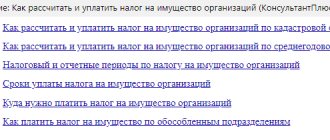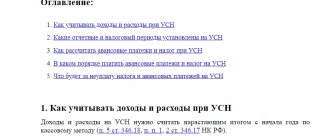In this article we will look at the property tax of an unfinished construction project. We will learn about tax for individuals and legal entities and understand the regulations.
For tax purposes, construction in progress is considered to be structures in respect of which construction work is ongoing, and which may be:
- temporarily not being completed;
- preserved;
- at the stage of experimental use;
- terminated.
The main thing when classifying real estate as unfinished is the fact that its price has not been finalized, and it cannot yet be exploited for the purposes planned during its construction.
Such buildings may be subject to property tax, which must be paid by individuals and LLCs. Property tax is of local importance; the procedure for its payment, the tax rate, determination of the tax base, and benefits depend on the decision of regional authorities.
Object of taxation
Construction projects that have not yet been put into operation are considered to be construction in progress. Objects in this category include:
- Mothballed construction site.
- At the suspension stage.
- Completely stopped.
- A finished object undergoing safety testing and compliance with technical parameters.
Chapters 30-32 of the Tax Code of the Russian Federation determine the taxation procedure for such objects. The law clearly establishes the requirement to pay property taxes on unfinished construction.
The main nuances of its payment are established by local authorities, since this tax relates to regional fees.
The court's decision
Courts of all instances, including the Supreme Court, recognized the additional tax assessment as lawful. The judges recalled that the object of taxation is movable and immovable property, recorded on the balance sheet as fixed assets in accordance with accounting (clause 1 of Article 374 of the Tax Code of the Russian Federation). Clause 4 of PBU 6/01 (approved by order of the Ministry of Finance dated March 30, 2001 No. 26n) established that in order to accept assets for accounting as fixed assets, the following conditions must be simultaneously met:
- the object is intended for use in the production of products, when performing work or providing services, for the management needs of the organization, or to be provided by the organization for a fee for temporary possession and use or for temporary use;
- the object is intended to be used for a long time, that is, a period of more than 12 months or a normal operating cycle if it exceeds 12 months;
- the organization does not intend the subsequent resale of this object;
- the object is capable of bringing economic benefits (income) to the organization in the future.
The question of including an object in fixed assets is determined, first of all, by its economic essence and the fact of its readiness for operation. As for the permit to put the facility into operation, this document only confirms that the facility complies with the design and meets building codes. The presence or absence of such permission does not in itself affect the tax consequences.
In 2013, the disputed property had the characteristics of a fixed asset, as it was used in business activities (rented out). The premises were provided with heat, water, electricity, telephone communications, the Internet, and equipped with fire and security alarms. At the same time, the tenants used the premises to carry out exactly the activities for which the facility was originally intended (for sports). That is, the disputed object met all the characteristics of a fixed asset and generated income from renting out premises. Thus, since 2013, the organization was a payer of the tax on the disputed property, and was obliged to submit declarations for this tax.
Legal basis of tax
Article 408 of the Tax Code states that property tax is calculated by the tax service. Its employees send notifications about the need to pay taxes to property owners at the end of the tax period. The notice indicates the payment amount.
In addition to Article 406, some aspects of property taxation are regulated by Articles 52, 401, 402, 403, 406 and 407 of the Tax Code of the Russian Federation.
Calculation of property tax on unfinished construction projects
In a situation where property rights have already been registered for unfinished construction, it is necessary to pay property tax in full. Its calculation may vary depending on the region. In particular, in some regions of the Russian Federation, the tax is calculated based on the cadastral value of the property.
The only way to avoid paying tax in this case is not to register ownership of the property until construction is completely completed.
Do I need to pay tax on an unfinished house?
The Ministry of Finance explained that:
- the obligation to pay property tax arises from the moment of registration of property rights (Article 400 of the Tax Code of the Russian Federation);
- objects of unfinished construction are recognized as objects of taxation on the property of individuals (Article 401 of the Tax Code of the Russian Federation);
- If ownership of an unfinished construction project is registered, then tax on it must be paid.
If the construction of a house is not completed, then the ownership of it may not be registered. In this case:
- There is no need to pay property tax for individuals;
- The tax will need to be paid only on the land plot on which the unfinished building is located. And only if the site is owned and not, for example, under long-term lease;
- It is impossible to obtain a personal income tax deduction for the construction of a house without registering ownership (letter of the Department of Tax and Customs Tariff Policy of the Ministry of Finance of the Russian Federation dated February 14, 2012 No. 03-04-05/7-177);
- If after 10 years of ownership of the land plot the ownership of the house is not registered, then the land tax will increase by 2 times. This increased land tax rate will be applied until the house is registered (Clause 16, Article 396 of the Tax Code of the Russian Federation).
Source: letter of the Department of Tax and Customs Policy of the Ministry of Finance of Russia dated October 17, 2021 No. 03-05-06-01/60401 “On the emergence of a taxpayer’s obligation to pay property tax for individuals,” Garant.ru.
See also:
If the cadastral value of land has changed, how to calculate the tax?
I bought it this year and sold it at the same time - do I need to pay sales tax?
It's time to choose an object of preferential taxation!
How will the tax office calculate the deduction when calculating property tax for individuals based on the cadastral value?
An unregistered building will cost more
They plan to increase the coefficient for long-term construction
12/05/2016 Subscribe
:
News
- “The powers of the tax authorities are not absolute, but must have a legal basis” 05/31/2019
- The Federal Tax Service controls the risks of using self-employed people in organizations 05/30/2019
- The Central Bank updated the requirements for banks for information protection 05.29.2019
- Not only the tax office, but also the taxpayer himself has the right to go to court to recognize a tax debt as uncollectible 05/20/2019
- Will the threshold for banking transactions subject to control be raised? 05/17/2019
- They want to cancel the tax on forgiven debts 05/15/2019
- When will a company be unable to apply deductions under an agreement with a counterparty? 05/14/2019
- When can a taxpayer who paid taxes through a “problem” bank be considered dishonest? 05/13/2019
- The absence of a receipt does not relieve you from the obligation to pay for utilities 05/07/2019
- Was there a depositor? 05/06/2019
- Excessively paid tax is not subject to offset or refund if it has not been received into the budget by 04/30/2019
- Typical violations of tax legislation 04/30/2019
- Greenhouse tax: who needs to pay and who doesn’t 04/29/2019
- What has changed and will change in the taxation of property of organizations and citizens? 04/25/2019
- What value of land is the basis for calculating tax? 04/23/2019
Articles
- Explosive testing: what is it and who conducts it? 05/21/2019
- How to improve the quality of examinations? 01/18/2019
- 15 secrets of forensic artists 12/28/2018
- What kind of forensic expert would Sherlock Holmes be today? 12/25/2018
- Never set foot in this gas station again: how and who carries out the examination of gasoline? 07/25/2018
- Expert or specialist: what's the difference between them? 07/18/2018
- Commodity examination will help you get your money back for low-quality shoes and fur coats 07/16/2018
- Forensic architect: new mission of architecture 04/23/2018
- On errors in the conclusions of the examination of the limitation of execution of document details 02/21/2018
- What is more effective at recognizing voices: automated systems or the ear? 12/26/2017
- How to confirm the examination of a government contract? 10/30/2017
- Establishing the absolute prescription of handwritten and non-handwritten details: about methods, patents and errors in them 02/07/2017
- Customs examination and examination in customs business: is there a difference? 09.21.2016
- How to conduct a commodity examination? 09/25/2015
- Examination of how old a document was created: procedure, objects and methods 09/07/2015
Citizens must pay property tax on unfinished construction projects only if they have formalized ownership of such objects. At the same time, citizens are required to pay tax only if the subject of the Russian Federation legally establishes payment of property tax based on its (the property’s) cadastral value. If the inventory value of property is used to calculate the tax, then the tax is paid only in cases where this inventory value of unfinished construction projects is determined.
How to apply for a tax exemption for an unfinished construction project?
Despite the fact that in some cases property tax can indeed be paid at a preferential rate, this does not apply to unfinished properties.
The tax on unfinished construction in all constituent entities of the Russian Federation must be paid in full. Therefore, you can receive the benefit only after completion of construction and registration of the building as a full-fledged real estate object.
It is also worth checking the lists of preferential tax payments with the local administration. Sometimes unfinished objects can also end up there. Lists of benefits for different regions can be found on the website of the Federal Tax Service.
Tax rate
The tax rate may vary in different regions. Certain restrictions are imposed by Article 406 of the Tax Code of the Russian Federation. In particular, according to it, the regional rate cannot exceed the minimum by more than three times. By the way, in most regions the tax rate on unfinished construction is 0.1%, and in Moscow it is 0.3% of the cadastral value of the property.
For individuals, when calculating on the basis of cadastral value, the marginal tax rates are determined by Article 406 of the Tax Code of the Russian Federation:
- 0.1% for residential buildings.
- 2% for administrative, retail facilities and facilities worth more than 300 thousand rubles.
- 0.5% for other objects.
Legal entities do not have to pay tax on unfinished objects at all, since these objects are not used in their commercial activities. The tax will need to be paid only after the facility is put into operation.
Dear readers! We cover standard methods for solving legal problems, but your case may be unique. We will help you find a solution to your problem for free
— simply call our legal consultant at:
+7 (495) 128-73-40 (Moscow)
+7 (812) 603-71-55 (Saint Petersburg)
8 (800) 302-33-75 (free call within Russia)
It's fast and free ! You can also quickly get an answer through the consultant form on the website.
Size
The tax base for tax calculation is determined by the following formula NB=KS-NB, in which:
- NB – tax base;
- KS – cadastral value at the beginning of the year;
- NV – tax deductions.
By 2021, a complete transition is expected when calculating the tax on cadastral value. Until this point, we will allow calculation based on the inventory value of the object.
Citizens must transfer property tax to the budget if the following conditions are met:
- The object belongs to the citizen by right of ownership.
- Its cost is known.
- At the regional level, the tax base has been approved (based on cadastral or inventory value).
There are some special cases of tax calculation:
- If the unfinished construction project was not accepted from the beginning of the year, then the cadastral value that is indicated in the cadastre during registration will be accepted.
- If an error was noticed during the cadastral valuation of unfinished construction, then the amount of this tax will be recalculated from the moment the error is discovered.
- If it was possible to challenge the cadastral value of the property, then all adjustments will be taken into account from the time the requests for price changes are submitted. However, not before changes are made to the cadastre.
Setting the property tax rate is the privilege of local authorities. That is why in one region the amount of this tax may differ significantly from another.
At the same time, the maximum size is controlled by the state. This point is described in more detail in Article 406 of the Tax Code.
Each region has the right to increase the minimum bet, but not more than three times. For example, in most regions the construction tax is 0.1% of the cadastral price of the property in question, while in the capital this tax is 0.3% of the cadastral value of a similar property.
Calculation of tax amount
Tax authorities determine the cadastral value of an unfinished property at the end of the year, and based on this data, they charge tax according to the regional rate. Therefore, the calculation procedure is general, but the tax may differ in different regions.
In the case of shared ownership of a construction project, each owner must pay tax on his share. Accordingly, the debts of one of the shareholders do not concern other owners and cannot be transferred to them.
If the property has been owned by the taxpayer for less than a year, then special rules for calculating property tax apply to it. In this case, the annual tax is divided into 12 months, and then multiplied by the number of months during which the payer is the owner of the unfinished property. Thus, the tax will be less than the annual one.
It is important to take into account that Article 23 of the Tax Code of the Russian Federation obliges the owner of the property to report to the tax office about all objects that he owns and for which tax notifications are not received. But if notifications do not arrive because the owner has the right to tax benefits, then there is no need to report such buildings to the tax office.
Results
For legal entities, unfinished construction projects are not subject to property tax.
For individuals, unfinished construction may be subject to tax if in the region of its location the tax base for the tax is calculated from the cadastral value, it is owned by the individual and its cadastral value is known.
You can find more complete information on the topic in ConsultantPlus. Free trial access to the system for 2 days.
Features of property tax under the NZS
Despite the fact that this is a type of property tax, this fee has the following features:
- It is calculated for each region separately, which means it may differ.
- It is calculated according to the cadastral value, although previously it was calculated according to the inventory value.
Also, the tax amount for unfinished construction is always less than for completed and commissioned objects.
* * *
Since 2015, unfinished construction projects are subject to tax for both individuals and legal entities. Particular attention should be paid to determining their value and the procedure for inclusion in the ready-to-use property.
Those. the rates for the Unfinished Construction Project and Other Construction are different (ERROR No. 2)
The next point that alarmed me: the tax base (in our case, the inventory value, since property taxes for individuals in the Sverdlovsk region are calculated based on the inventory value) is simply huge for an unfinished building on the outskirts of the city of Asbest, which is located 100 km from the regional center (the city of Yekaterinburg), moreover, if you add it up with the cost of the plot on which it stands, it will be 3 times higher than the market price! (ERROR #3)
With all these errors, we went to the tax office at the location of the property, since the inspectorate at the taxpayer’s place of residence does not resolve such issues. We were told that they would change the name of the object (Other to Construction in Progress). But they explained something about the tax base for a long time, they talked about deflator coefficients, that the cost data is provided by the BTI, and taxes were calculated correctly based on these data.
Here I will make a small remark about the deflator coefficient. We are currently living in a transition period for tax calculations. Until recently, the tax base for calculating property tax for individuals was based on the inventory value calculated by the BTI (it was much lower than the market value), now some subjects of the Russian Federation have already switched to calculating the cadastral value (which is much closer to the market value), some subjects still is calculated using inventory value, but every year (until the region switches to calculating using cadastral value, but no later than 2020) it is multiplied by a deflator coefficient established by the government of the Russian Federation. All this is done to ease the tax burden on taxpayers. And in 2021, all entities must switch to cadastral value when calculating tax. In our example, the deflator coefficient for 2015 is 1.147, the tax base for 2014 is 670,379 rubles, multiplying one by the other - we get the tax base for 2015 - 768,924. Everything fits.
We go to the BTI in Asbest - they tell us, yes, we provide information about the cost to the tax office upon their request, the cost of your object is exactly that, there is no technical error. In response to the remark that in Yekaterinburg the inventory value of apartments near the center is lower, they shrug their shoulders.
Well, we're not giving up. First, they wrote in the taxpayer’s personal account that it would be nice to receive a normal notification and change the status of the object (after a personal appeal to the tax department of Asbest, it was never changed). After some time, we received a new notification:
Cadastral value of NZS objects
The cadastral value is determined on the basis of the state cadastral valuation. For both finished buildings and unfinished ones, the cadastral value is usually less than the market value. In rare cases, the opposite happens, but this is possible for objects that have already been put into operation, which have increased in price due to the development of infrastructure around them or for other reasons. For unfinished construction, the cadastral value is always lower than the market value.
The Federal Tax Service clarified the specifics of taxation of unfinished construction
In those regions where the tax on unfinished construction is calculated based on the cadastral value, it cannot exceed 0.3% of the cost (for a house) and 0.5% (for other construction projects). In this case, the owner of an unfinished property cannot claim property tax benefits other than those established in the given municipality.
If the inventory value is used to calculate the tax, then no tax is charged at all on unfinished objects (in accordance with the order of the Ministry of Construction of the Russian Federation No. 87 of 1992).
Common mistakes
Error No. 1: An unfinished building is not listed on the enterprise’s balance sheet as a fixed asset, property tax in respect of it is not transferred to the budget, but it is regularly used in the production process.
Comment : This cannot be done; similar cases have already been considered by the court, and the decision was made in favor of the tax inspectorate. You must either register the structure and pay tax on it, or refuse to use it until the official start of use in the company’s work.
Error No. 2: An attempt to apply benefits in relation to a building, the cost of which, according to the cadastral valuation, exceeded three hundred million rubles.
Comment : Property benefits for unfinished buildings do not apply to buildings worth more than three hundred million and to premises used in the course of business activities.
Error No. 3: Filling out an application to the tax office for a property tax benefit later than November 1 of the year for which the tax should already be assessed.
Comment : You must leave an application at the Federal Tax Service office and provide documents proving your rights to the benefit no later than November 1 of the reporting period, since the Federal Tax Service calculates the amount of tax and sends notifications to individuals 30 days before the payment deadline (for individuals this is December 1), otherwise take advantage of The benefit will only be available starting next year.







